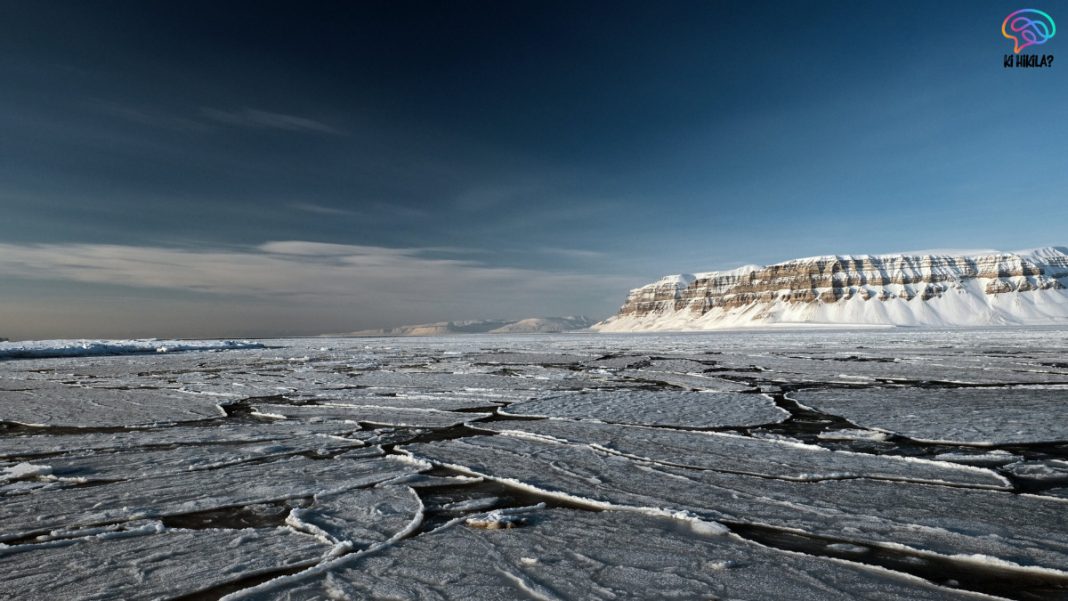Arctic Sea Ice Loss Slowdown has emerged as a surprising trend in recent climate studies, sparking global interest in the future of the Arctic. Research shows that the pace of Arctic ice decline has eased over the past two decades. However, scientists emphasize that this is a temporary phenomenon caused by natural climate variability, not a reversal of global warming. Experts caution that the slowdown will eventually give way to faster and more severe melting, underlining the urgency of global climate action.
Arctic Sea Ice Decline: A Key Climate Indicator
Arctic sea ice has long been a vital marker of climate change. Over the last five decades, the region has lost more than 10,000 cubic kilometres of ice, primarily due to rising global temperatures. This melt is driven by greenhouse gas emissions resulting from human activities like burning coal, oil, and gas.
As ice vanishes, Earth loses its natural reflective shield—known as albedo—which once bounced sunlight back into space. The reduction in reflective surfaces accelerates global warming, creating a dangerous feedback loop that magnifies climate change impacts.
The Recent Slowdown in Arctic Ice Loss
Between 2003 and 2023, scientists observed a notable slowdown in Arctic ice loss, with the rate decreasing to 0.35 million square kilometres per decade. This was a stark contrast to the peak melting rate of 1.3 million square kilometres per decade recorded between 1993 and 2012.

Importantly, this slowdown does not mean the Arctic is recovering. Instead, it reflects temporary conditions that mask the true extent of climate stress. Researchers emphasize that the slowdown should not be misinterpreted as a victory against climate change.
Role of Natural Climate Variability
The Arctic Sea Ice Loss Slowdown is primarily attributed to natural climate variability. Large-scale patterns such as the Pacific Decadal Oscillation (PDO) and Atlantic Multidecadal Variability (AMV) influence sea surface temperatures, creating temporary cooling effects in Arctic waters.
These natural fluctuations can reduce melting for several years or even decades. Yet, they operate in parallel with human-driven climate change, sometimes masking and sometimes amplifying long-term warming trends. Scientists warn that when these cycles shift, melting will likely accelerate dramatically.
Climate Models and Future Projections
Climate models have simulated both historical and future Arctic ice conditions. They confirm that slowdowns in sea ice loss are natural and expected to recur periodically, even under scenarios of high greenhouse gas emissions.
Current projections suggest there is a 50% chance the slowdown will last another five years and about a 25% chance it could continue for ten years. But once this temporary phase ends, the pace of melting is predicted to surge.
Models estimate that post-slowdown, the Arctic could lose 0.6 million square kilometres of sea ice per decade beyond the long-term average, accelerating the region’s vulnerability.
Implications of Accelerated Melting
When the Arctic Sea Ice Loss Slowdown ends, the consequences could be far-reaching. Rapid ice decline will intensify global warming and disrupt weather systems worldwide. Changes in Arctic ice cover alter atmospheric circulation, which can trigger extreme weather patterns, including harsher winters in some regions and intensified heatwaves in others.
Furthermore, shrinking Arctic ice threatens ecosystems dependent on sea ice for survival. Polar bears, seals, and walruses rely on stable ice habitats for hunting and breeding. The loss of sea ice will also accelerate sea level rise, endangering coastal communities globally.
Urgency for Climate Action
Scientists underline that the current slowdown should not lead to complacency. Greenhouse gas emissions remain at historically high levels, fueling global temperature increases that threaten both Arctic and global stability.
The Arctic Sea Ice Loss Slowdown offers only a temporary pause, not a solution. Policymakers, industries, and citizens must prioritize aggressive emission cuts, investment in renewable energy, and global cooperation to mitigate climate impacts.

Immediate action is critical to avoid catastrophic outcomes once the slowdown phase ends and accelerated melting resumes.
Conclusion
The Arctic Sea Ice Loss Slowdown is a reminder of the complexity of Earth’s climate system. While natural variability has temporarily masked the full effects of human-driven warming, the long-term trajectory remains alarming. The Arctic is still on a path toward unprecedented decline, with global repercussions.
This slowdown should serve as a warning, not reassurance. Without urgent climate action, the eventual acceleration of ice loss could overwhelm ecosystems, economies, and societies worldwide. The world must treat this window of time as an opportunity to double down on emission reduction and climate resilience strategies before it is too late.




